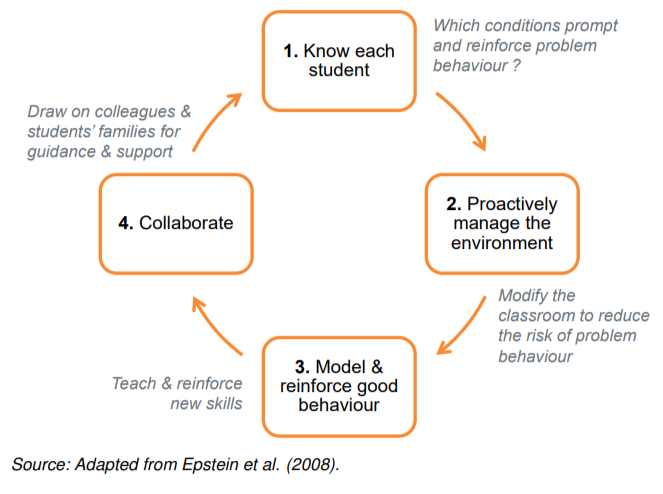By now, the excitement of a new school year is starting to fade and students' enthusiasm levels are at risk of falling. As the term progresses the likelihood of behaviour issues increases. Behaviour problems disrupt the flow of lessons and increase the stress levels for both the teacher and students. Diffusing early emerging issues at the start of the year will help to continue creating the right environment for engaged learning.
The most common evidence-based techniques in classroom management include preventative approaches and responsive approaches. Preventative approaches set high expectations for learning and behaviour, build strong relationships with students and provide clear instructions. Responsive approaches encourage and praise students and implement consistent consequences and corrections. (Goss, Sonnemann and Griffiths, 2017). While these approaches are very familiar to teachers and are being implemented continuously, we can still find students disengaging from the lesson and becoming disruptive.
A key challenge for teachers is knowing, not only what to do, but learning how and when to do it. Interchangeable comments from a teacher, encouraging or correcting, can elicit varied student responses generating the need for teachers to understand their students well and the different triggers for student behaviour.
The process for learning how to use evidence-based techniques.
1. Teachers must know their students and the specifics of any behaviour issues, including passive disengagement. Teachers need to be able to identify the conditions that prompt and reinforce behaviours, so that they can tailor effective and efficient responses. A key issue that might not be apparent immediately is considering how the teacher’s own behaviour might be contributing to the problem.
2. Teachers should proactively manage the classroom environment, altering or removing factors that trigger problem behaviour. They should revisit and reinforce expectations of student behaviour and learning in the classroom. If needed, teachers should rearrange the classroom schedule or learning activities to better meet students’ needs, or adapt instruction to individual students to promote their engagement.
3. Teachers should model and reinforce good behaviour. Teaching and reinforcing new skills can increase appropriate behaviour and enhance a positive classroom climate. This includes teaching students socially and behaviourally appropriate skills, to replace problem behaviours. Teachers can help students to know how, when, and where to use these new skills.
4. Teachers should collaborate with colleagues and experts to discuss issues and potential solutions. Taking opportunities to observe teachers who have created successful classrooms is important, for example seeing how something is said to a particular student, or how the behaviour of another student is tactically ignored.

(Goss, Sonnemann and Griffiths, 2017)
Engaging each student socially, emotionally and intellectually in learning requires a complex set of skills. Tailoring a response for each disengaged student will be hard work and may take a few attempts before you reach success. However, persisting in wanting to know your students really well can only increase your student relationships for many positive interactions into the future.
Goss, P., Sonnemann, J. and Griffiths, K., 2017. Engaging students: creating classrooms that improve learning. 1st ed. [ebook] Grattan Institute. Available at: <https://grattan.edu.au/wp-content/uploads/2017/02/Engaging-students-creating-classrooms-that-improve-learning.pdf> [Accessed 21 February 2022].